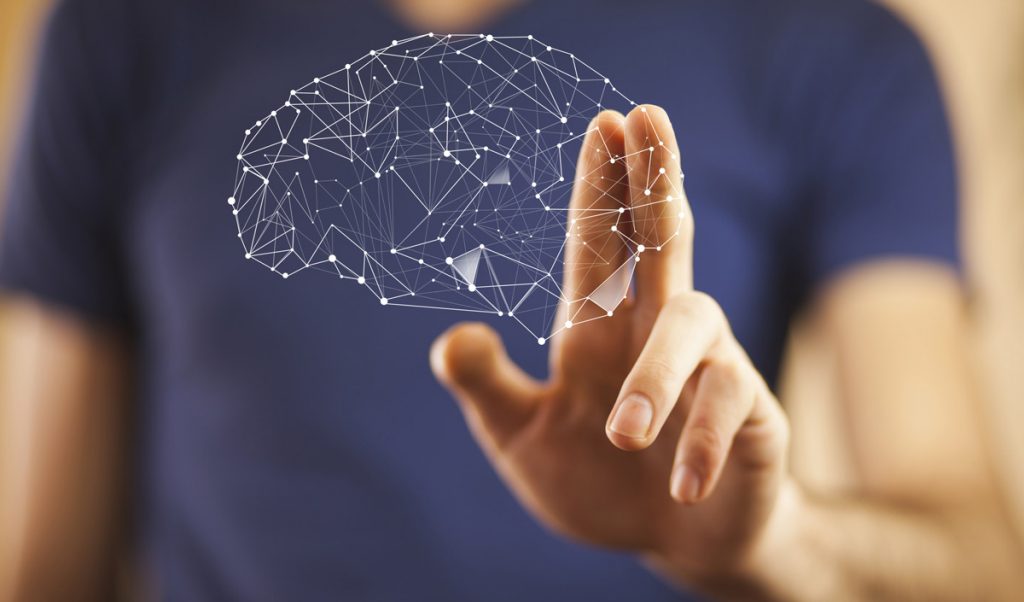In this blog I’m going to try to explain the biology behind anxiety and explain how it’s the appliance of science that allows hypnotherapy to help with anxiety.
To understand how hypnotherapy is such an effective way to help with anxiety, we first need to understand how your brain creates the physical and mental reactions to what it perceives as a problem. Once we understand a bit about brain science, hypnotherapy techniques make more sense.
What is anxiety?
“Men are disturbed not by things but by the views which they take of them”
Epicetus, Greek Philosopher, around 100AD
Most people are familiar with anxiety. It’s that awful feeling that something could go wrong. You might feel hot, cold, dizzy, nauseous, panicked, guilty, frozen to the spot, full of electricity. The experience is different for everyone but it can be just awful. It’s normal to feel anxious just before a job interview, on a first date, or when you sense danger. But to feel anxious most of the time or when there’s no obvious reason for it can be debilitating.
The feeling of anxiety is a normal bodily function to keep us safe. It’s created by the release of hormones that divert energy to our circulatory system and our muscles so that if we need to run, we can run. Sometimes though, the brain misunderstands the situation it’s in and triggers the anxiety response when it’s not needed. That’s when anxiety becomes a problem and that’s where hypnotherapy can help.
Understanding neurological pathways
Your brain contains billions of nerve cells call neurons. Messages from your body are received by the brain and passed from neuron to neuron until they trigger an appropriate response.
As there are billions of neurons, the first few times your brain tries out a new activity, the route between the trigger point and the end response might vary a little each time. It’s a learning process for your brain. However, every time the activity is repeated, the brain gets more efficient at sending the message. Eventually it gets so efficient that the journey is automatic.
 How many different routes could your brain use to send a message from the front to the back? There are literally billions of choices. If an activity, an action or an experience is repeated often enough, the brain will work out and remember the most efficient route. We call that a neurological pathway.
How many different routes could your brain use to send a message from the front to the back? There are literally billions of choices. If an activity, an action or an experience is repeated often enough, the brain will work out and remember the most efficient route. We call that a neurological pathway.
As an analogy, think about a 6 month old baby trying to feed herself. Now fast forward a year and how much better is she at getting food in her mouth first time around? Forming neurological pathways has effectively automated the task. Practice makes perfect.
How does the brain get more efficient at sending messages and triggering reactions?
To speed up the messaging process, your brain forms neurological pathways. Clear and strong communication between nerve cells. It’s like going on the motorway rather than the country roads. Once a neurological pathway has been formed it becomes the “go to” messaging medium when the brain receives a specific message from the body.
When your body sends a message that it has seen/heard/felt/smelt/tasted something the brain associates with danger, the message whizzes along a neurological pathway and tells the body to release adrenalin into the bloodstream. Adrenalin is the hormone that stimulates the feelings we associate with anxiety.
How does the brain decide what’s dangerous?
Your brain makes associations between what the body is sensing and what is around you. The neurological pathway would most likely have been formed when you are hurt or frightened by something. For eample: if a child feels fear from being barked at by a dog the young brain absorbs that and from there, the brain shortcuts, generalises the fear and can see all dogs as dangerous.
One strong experience is enough to forge a neurological pathway. However, we humans are very good at reinforcing neurological pathway by remembering and thinking about that one experience.
Funnily enough something doesn’t need to physically happen in order for the reaction to happen in your brain…watching a film or hearing a friend’s story might create an association in your brain.
Stimulus and reaction
We know how when something dangerous or upsetting happens, your brain creates a neurological pathway so that it can react quicker next time.
For the reaction to happen, your brain needs a trigger or a stimulus. Now the trigger can be a smell, a sound, an object, a person … anything that happened to be there at the same time as the “bad” thing.
One lady I know suffers not from anxiety but from nausea whenever she hears certain songs. When she was first expecting her first child she suffered morning sickness but carried on working. On her journey to and from work she played the same cassette in the car. The baby is now 30 years old, 6ft tall, has a big bushy beard and two children of his own. But his Mum still feels ill whenever she hears a track from that cassette…even if it’s playing in the background while she’s thinking of other things. The stimulus = Michael Jackson’s Thriller, The response = nausea. That’s how strong, and how seemingly illogical, neurological pathways can be.
Having help with anxiety will help you to relax, resulting in a better night’s sleep and a general improvement in wellbeing.
The power of the subconscious mind
The body sends 2,000,000 pieces of information PER SECOND to the brain. That’s too much information for your conscious mind to process. Your subconscious brain knows everything and is ready to react to any danger. But it only shares about 10% of the information with the conscious mind.
*How does your left foot feel right now? I’ll wager you weren’t even aware of your foot until you read that and wiggled your toes.
When an anxiety attack comes seemingly from nowhere, it’s more than likely that your brain has perceived something that your conscious mind hadn’t noticed. That’s triggered the release of adrenalin and – well you know what happens next. Medication might help in the short term but getting long-lasting help with anxiety involves changing the way your brain reacts to what it wrongly percieves as a threat.
How does hypnotherapy help with anxiety?
My job as a hypnotherapist is to first of all help you investigate what might be triggering anxiety. There may be more than one trigger – there often is. I use relaxation techniques to help you think more clearly. You are completely conscious and in control all of the time – there’s no finger clicking or trances.
Once we’ve established what the trigger might be, I help you to build new neurological pathways so that your body responds differently to that trigger. All that involves is talking together to establish different thought patterns.
The objective is for either
- The subconscious brain to notice and then ignore the background information that would normally trigger an anxiety attack
- Or, for the subconscious brain to gives that information a different meaning. I.e. that item X is over there but it’s not a danger to me.
Clinical Hypnotherapy is not about changing or blocking out memories. It cannot change your personality or your opinions. Hypnotherapy is about helping your brain to respond differently to specific stimuli so that you can feel better and concentrate on the things that matter to you.
Find out how clinical hypnotherapy helps your subconscious brain to control anxiety


Recent Comments